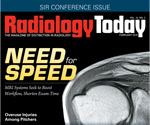 |
So much of medicine’s benefit is incremental. Slow progress is still progress, but it can be frustrating until that progress starts to reveal a startlingly different picture. Recent data from one peripheral artery disease program in Florida show how a combination of good interventional treatments and coordinated care can build to a dramatic result.
— Jim Knaub, editor |
 |
 |
PAD Program Produces Endovascular Success Story
Testing and treating patients with peripheral arterial disease (PAD) can save legs and lives, as evidenced by one health system’s program that reduced amputation rates by almost 80%.
Julio Sanguily III, MD, recently presented results from a limb salvage program at Martin Health System in Stuart, Florida, at the International Symposium on Endovascular Therapy (ISET) in Hollywood, Florida. The number of amputations at Martin Health System fell by 79% over five years after the center implemented a limb salvage program that provided patients with PAD an angiogram and education program for both patients and physicians about new endovascular treatment options. Approximately 150,000 Americans have leg or foot amputations every year, primarily as a result of poor circulation caused by PAD. Eight to 12 million Americans—one in 20 who are 50 or older—have PAD, according to ISET.
Full story » |
 |
 |
CMS To Cover Low Dose CT Lung Cancer Screenings
The Centers for Medicare & Medicaid Services recently announced that they will cover lung cancer screenings with Low Dose CT annually for individuals who meet certain criteria.
Studies Demonstrate Seizure Prediction Models in Critically Ill Children
A pair of studies presented at the American Epilepsy Society’s 68th Annual Meeting suggest that researchers may be able to use brain images to predict when critically ill children may suffer a seizure.
Microcomputed Tomography Shows Less Bone Mass in Modern Humans
According to a press release from Penn State University, a recent study using microcomputed tomography showed modern humans have comparatively light bone structure compared to early human species and other modern primates which may be due to the modern abandonment of the constant physical activity that was inherent in the life of early hunter-gatherers.
Radiologist Recommendations for Chest CT Have High Clinical Yield
RSNA reports that a substantial percentage of patients who receive radiologist recommendations for chest CT to evaluate abnormal findings on outpatient chest X-rays have clinically relevant findings. |
 |
 |
| Radiology Today's online gift shop features a wide variety of items for radiology professionals. Choose from t-shirts, journals, clocks, buttons, mouse pads, and much more! Check out our secure online shop today or call toll-free 877-809-1659 for easy and fast ordering. |
 |
|
|
 |
|
|
 |
 |
MRI Technology Update: Need for Speed
MRI manufacturers, noting an increased expansion into smaller community hospitals, have adjusted their product lines in order to better serve those facilities. Read more »
Armed With Information
For more than a century, pitchers have suffered arm injuries—with what most perceived as little rhyme or reason—while playing baseball. However, a recent study of shoulder MRIs by researchers at Thomas Jefferson University Hospital may shed light on the cause of some of the most severe injuries. Read more »
Data Breach
Health care organizations victimized by a data breach face a series of residual effects, including financial and reputational harm. Read more »
Proton Therapy and Cost
The cost of proton therapy facilities is considerable, but its expansion and evolutions suggest that it might not be as prohibitive as some perceive. Read more »
Endovascular Stroke Treatment
A recent study showed that a combination of an endovascular thrombectomy procedure and tissue plasminogen activator application to the clot produced better outcomes than the standard treatment. The result has produced optimism from those who support endovascular intervention. Read more » |
 |
|
